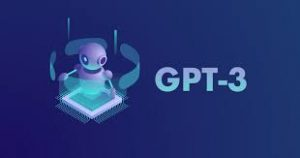
Large language models (LLM) such as GPT-4 have significantly progressed in natural language processing and generation. These models are capable of generating high-quality text with remarkable fluency and coherence. However, they often fail when tasked with complex operations or logical reasoning. In this article, we will discuss the methods to increase the reliability of ChatGPT as suggested by OpenAI. Along with it, we will also discuss some additional techniques and prompts that other researchers have proposed.
Also Read: What is ChatGPT? Everything You Need to Know
Model Capabilities Depend on Context
One common mistake made by those working with GPT-3 is assuming its capabilities are fixed across all contexts. If GPT-3 answers a question requiring simple logic incorrectly, it does not necessarily mean it is incapable of a simple reason. GPT-3 can occasionally be fixed with a better prompt that directs the model toward the desired output.
Split Complex Tasks into Simpler Subtasks
Splitting complicated tasks into simpler pieces is one way to give a model like ChatGPT more time and space to think. Breaking complex instructions into smaller subtasks can help keep the model focused on each subtask. It also helps in giving it more time to reason out each step.
For example, if we ask a model to summarize a lengthy text in its original language, it may lapse into English. However, if we split the task into shorter subtasks, we can guide the model toward a more accurate output.
Also Read: How To Use ChatGPT At The Full Potential: Tips & Prompts
Ask the Model to Explain First, Then Respond

Prompting the model to reason out the solution gradually rather than rushing to the conclusion right away is another effective method for enhancing the accuracy of the replies. Thinking aloud is a strategy that can significantly increase the likelihood of getting the correct answer. Simply adding Let’s think through this step by step to answers is the simplest method to get a model to explain the solution.
Few-Shot Examples
We can prompt the model to explain its answers in many ways, including using a few-shot example. This technique involves demonstrating a few examples and is studied by Google researchers. Using this method, we can generate a dataset of explanations that could be used to fine-tune a model for maximum performance.
Fine-Tuned Models
You’ll need to fine-tune a bespoke model to get the best performance possible on a task. Eric Zelikman, Yuhuai Wu, and others published an innovative method in 2022 that employs a few-shot prompt to produce a dataset of explanations that could be used to fine-tune a model. The goal is to generate candidate explanations using a few-shot prompt and only maintain those that lead to the correct response.
Selection-Inference Prompting
Splitting the single prompt for creating explanations and answers into smaller segments is one extension of the chain-of-thought method. A prompt (a “selection prompt”) first chooses a relevant subset of facts from the text. A subsequent prompt (the “inference prompt”) concludes the selected data. By alternating these cues, one can produce a loop of reasoning that leads to a conclusion.
Also Read: Prompt Engineering: Rising Lucrative Career Path AI Chatbots Age
Least-to-Most Prompting
Least-to-most prompting is a method for breaking down reasoning tasks into more manageable, dependable subtasks. To prompt the model like ChatGPT, an LLM, with something like “To solve a question, we need first to solve:” the goal is to elicit a subtask from it. The model can then solve having completed that subtask.
Maieutic Prompting

In contrast to the previous techniques, which try to maximize the likelihood of correct answers, another approach uses GPT-3 to generate a tree of possible explanations (both correct and incorrect) and then analyze their relationships to guess which set is correct. This technique was coined maieutic prompting. It works by building a maieutic tree, where each node is a statement that could be true or false.
Also Read: OpenAI with Andrew Ng Launches Course on Prompt Engineering (Limited Free Time Access)
Verifiers
Another essential technique for improving task performance is to train a verifier or discriminator model to evaluate the outputs of the primary generative model. If the discriminator rejects the output, you can resample the generative model until you get an acceptable output.
Conclusion
Research into LLMs is very active and evolving rapidly. The researchers not only want to continue to improve the models. But they also continue to improve our understanding of how to employ them best. While future best practices may eclipse the specific techniques mentioned here, the general principles behind them will likely remain a vital part of any expert user’s toolkit. By using these methods and staying up-to-date on new developments, we can increase the reliability of ChatGPT and other LLMs.
Learn More: An Introduction to Large Language Models (LLMs)





